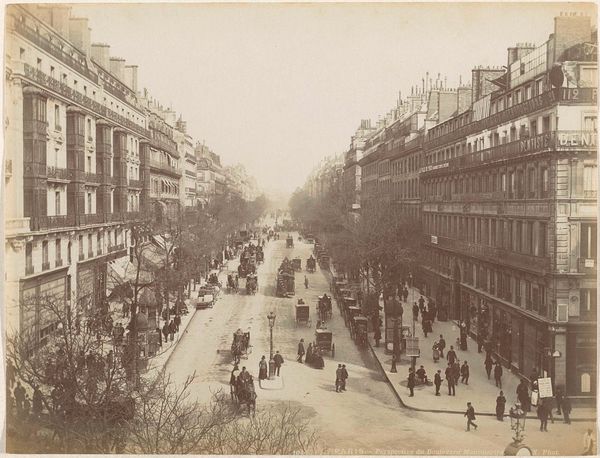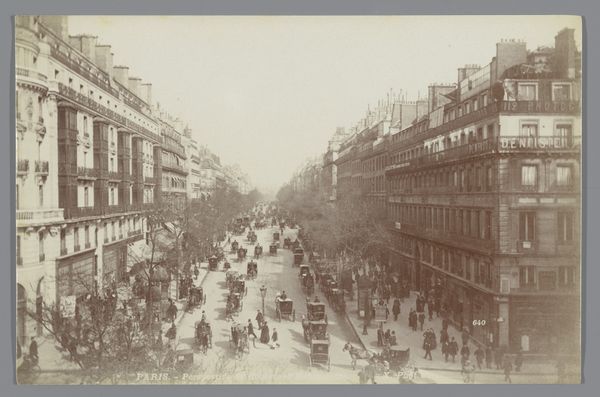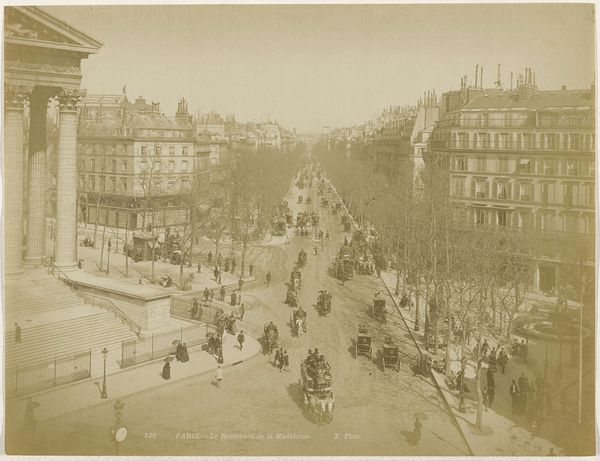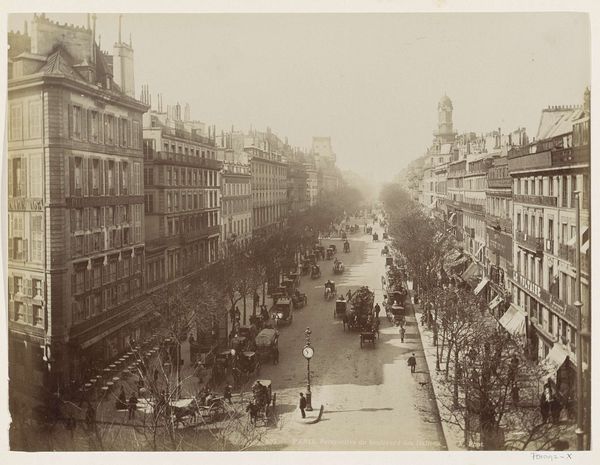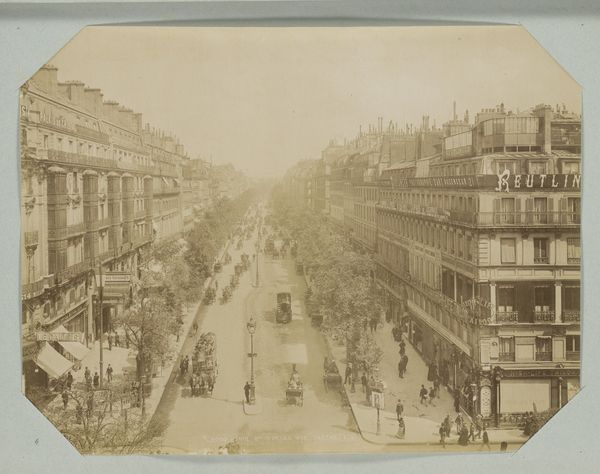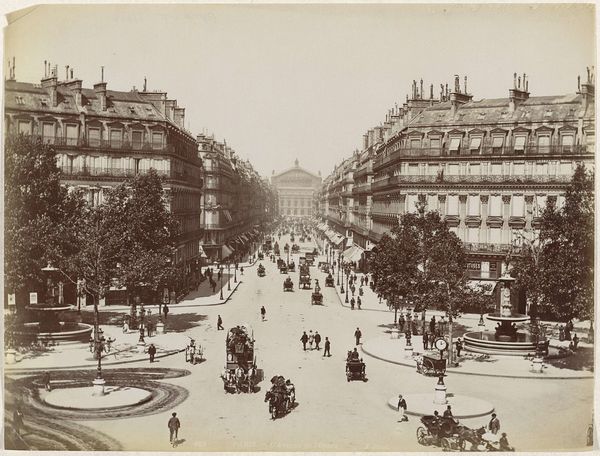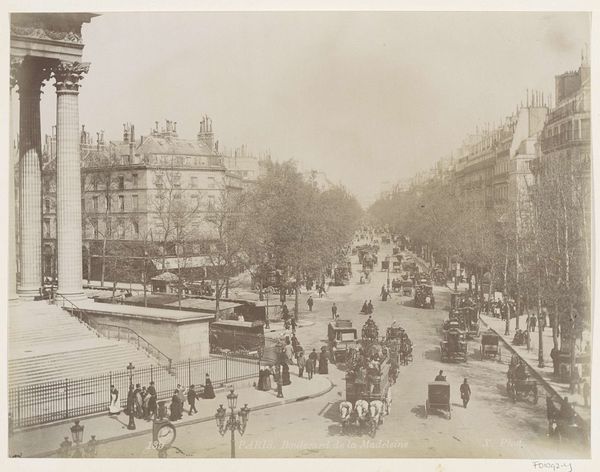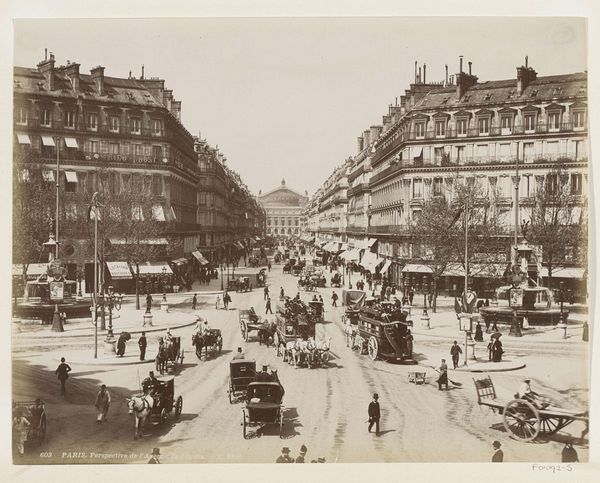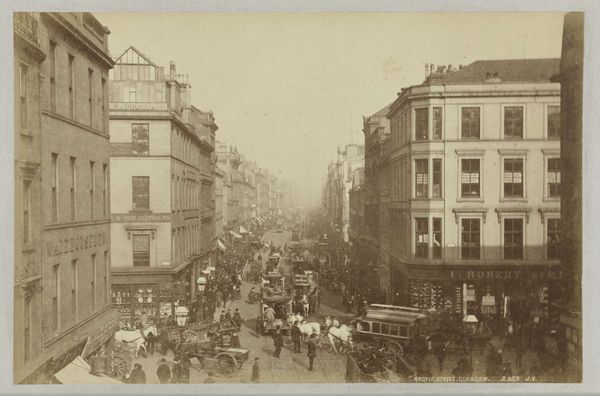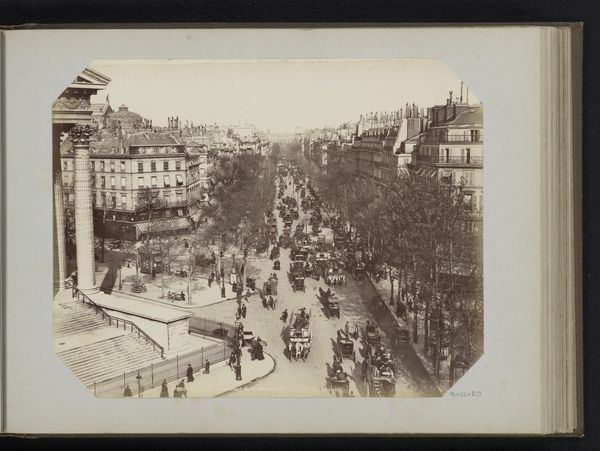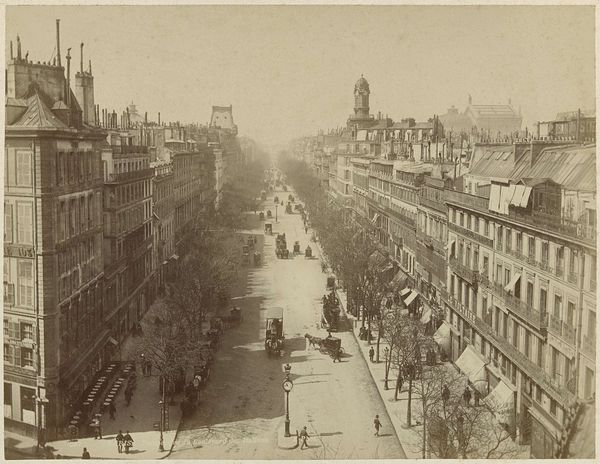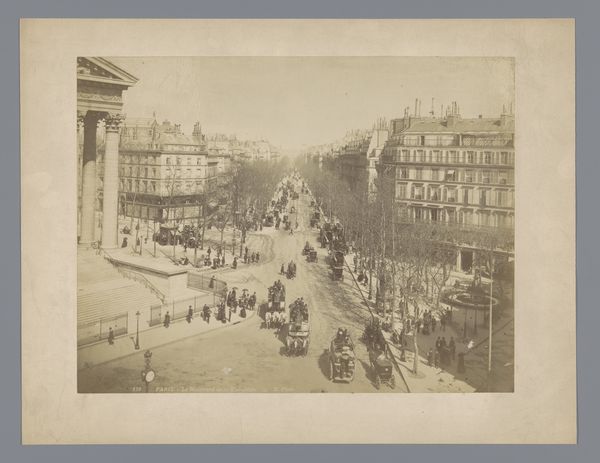
silver, print, daguerreotype, photography
#
silver
# print
#
landscape
#
daguerreotype
#
street-photography
#
photography
#
cityscape
#
realism
Dimensions: 20.8 × 27.4 cm (image/paper)
Copyright: Public Domain
Curator: This is a silver print, a daguerreotype to be exact, titled “Montmartre”. It dates to 1870. Editor: It strikes me as so rigidly formal, and yet softened by the hazy quality of light that's inherent in early photography. Look at the long recession of buildings—the eye is pulled deep into the image’s space. Curator: Indeed. Notice the placement of the photographer; he or she found a vantage point that really emphasizes the urban grid and Baron Haussmann's urban planning. We are offered a distinct perspective, one that seems intent on cataloging the modern Parisian cityscape. Editor: Yes, the organization of visual information here is superb; it's a very calculated ordering. I see a visual narrative about the modern city unfolding before us—the horse-drawn carriages, the suggestion of bustling commerce—but there's a quiet dignity. Do you think that captures a social narrative from the period? Curator: Undeniably. This work is documenting Paris right after Haussmann’s renovations: wide boulevards and symmetrical architecture reflect ideas of order and progress, ideals very prominent at that point. And also, a visual encoding of emerging class structures…who has access to the boulevards? To transportation? Who doesn't? Editor: It is all about those encoded narratives. I agree, the materiality speaks to this, too. A print, of this specific medium, emphasizes permanence, capturing fleeting urban life to then preserve the socio-historical moment. I’m fascinated by its simultaneous feeling of dynamism and complete stasis. Curator: In looking at the technical properties of this piece and, more pointedly, the high tonal range for early photographic processes, my mind focuses on the formal success. Editor: For me, “Montmartre” captures not just the scene itself, but the spirit and aspirations of an era in transition. I value the way this work lets us reexamine this past world as both participants and observers.
Comments
No comments
Be the first to comment and join the conversation on the ultimate creative platform.
